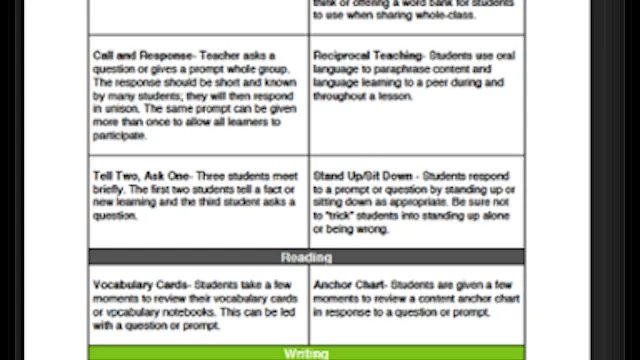Two-Way Listening Maximizes English Learner Comprehension


Two-Way Listening Maximizes English Learner Comprehension
In an attempt to “walk the walk” of some summer independent professional development suggestions that I mentioned in a recent blog post, I’m currently reading Pauline Gibbon’s latest book, Scaffolding Language and Scaffolding Learning (2015). It’s filled with valuable teaching tips and I recommend this resource for any teachers of language. One of the chapters on listening got me thinking about comprehensible input and specific classroom activities teachers can use to maximize learning. In this blog I’d like to discuss increasing comprehensible input with two way listening activities.
Research shows that many students spend about 90% of their time at school listening to teachers and doing independent work. Student engagement and interaction is vital, and I while plan to blog more on it in the future, today I’d like to advise teachers to foster interaction by focusing on their lesson delivery. Mini-lessons, lessons, direct instruction - whatever you may call it - are necessary tenants when carefully planned and appropriately implemented. The more teachers talk, the more students listen. However, requiring English language learners to listen for extended periods of time is cognitively demanding, exhausting and less likely to result in learning. This instruction, or student input, needs to be adapted to meet the needs of your ELLs.
According to David Nunan, there are two formats for listening - one-way and two-way listening. Examples of one-way listening, also known as “listening to” activities, are lectures, stories, radio shows and television programs. While this form of listening is important, two-way listening, also known as “taking in” listening, is better aligned with comprehensible input. Conversations, content chatter and interviews are all examples of two-way listening.
For an easy way to integrate these activities into your instruction, use the Chunk and Chew with 10 and 2 format. Take your purposeful instruction and chunk it into no more than 10 minutes of one-way listening for students. Then, follow that instruction with a short 1-2 minute interactive opportunity for students to “chew” on the language and content using two-way listening.
What kinds of activities allow students to practice two-way listening? Turn and talks are always a great activity, but it’s important to mix it up and provide a variety of opportunities.